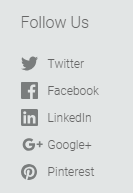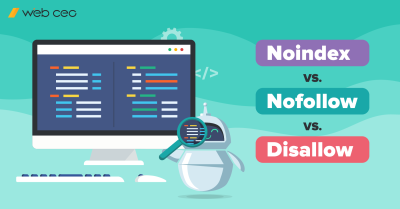
Some editors-in-chief want pictures of Spiderman. Others just want as much publicity for their news as possible. Whichever type you are, there’s one undeniable truth: if you run a news website, SEO is required to conquer the world of online journalism.
And this post, which describes SEO for news sites, is the lottery card you’ve been looking for. Are you ready to start winning the traffic sweepstakes? Read on.
1. Make your site easy to browse
News sites take in the info about every interesting event in the world. As a byproduct of this mission, they end up with thousands of pages, all of which need to be organized. What happens when they aren’t organized? Visitors get lost, link juice doesn’t flow, the site doesn’t rank, and your employers hire a more competent SEO specialist. Nobody is left happy!
So the first milestone is to avoid making a mess on your own news aggregator. You can do it by ensuring the site has the following things:
- Search bar. This is a must-have on any site with a great number of pages. Help users quickly find articles on the topics that interest them.
- Pagination or infinite scroll. Each is better than the other in its own way, but you can’t run a news site without one of the two. You will have so much content that you’ll need to display it to users in bits.
- Categories and tags. Use them to group together articles on related topics. They are also good for SEO: links to category and tag pages have anchor texts relevant to your site. You can also include those links in a navigation bar.
- Breadcrumbs. A line with two links – one to the home page, the other to the news category – is enough to make browsing a bit easier.
These will ensure your visitors can quickly find any content they want and jump between the site’s pages. What else does your news website need?
- Create a sitemap. All your news articles must be indexed by Google or they won’t appear in its search results. Use WebCEO’s Sitemap Generation tool to create one and be sure it’s updated regularly.
- Link your articles between each other. If users see a link that catches their attention, they’ll click on it and spend more time on your site, which is always good. It will also help your articles gain authority and push them higher in Google’s SERPs.
2. Optimize your news site
On-page SEO for news sites is pretty straightforward. All you need is high-quality articles that are optimized both for users and search engines. A news portal is essentially just a very big blog. Do you remember how to optimize blogs? There you have it.
If SEO is all Greek to you, don’t worry! This post is meant to help with your news site optimization, after all.
Find keywords, pronto!
“Strike while the iron is hot” applies to news like nothing else. You have to act quickly, or other sites will report first and steal your audience. Be fast when writing your articles, and be even faster when optimizing them!
Fortunately, if you need keywords for a news website, WebCEO’s Keyword Research tool is a solid choice both in terms of speed and quality.
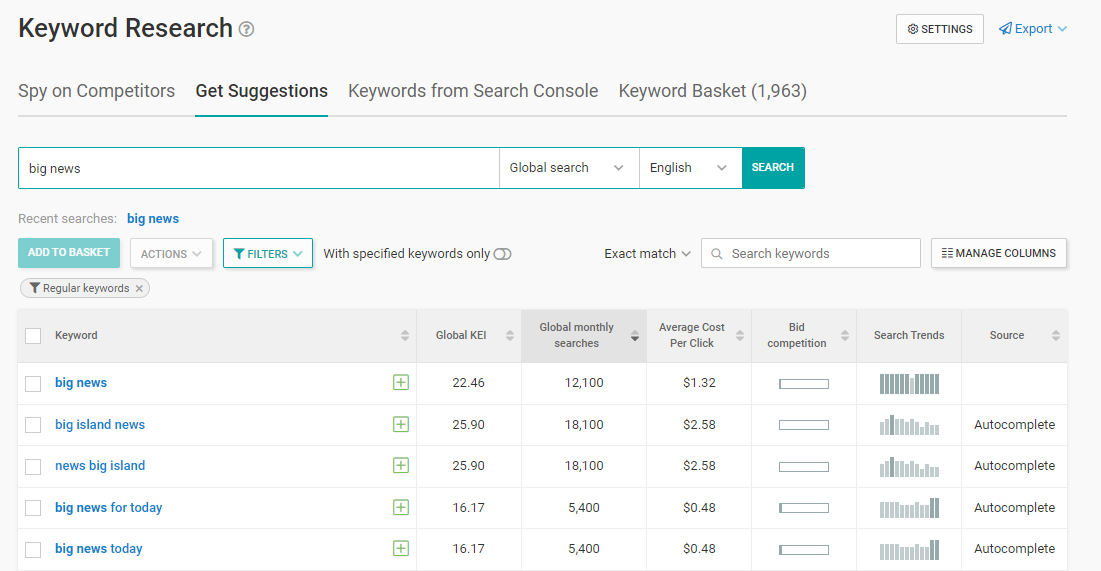
Keywords are to be placed in:
- Page titles. And since they are titles of news articles, they need to be eye-catching, clickable and contain power words. Fortunately, this niche thrives on clickbait titles, so you have a lot of room for maneuver.
- Meta descriptions. They work as follow-ups for titles, so they should fulfil the same purpose and be just as eye-catching.
- Page URLs. A link you can read and understand looks much more trustworthy than a random string of symbols. Many content management systems automatically generate default URLs for new pages; instead of using those, write your own URLs.
- H1-H4 headings. These help both Google and the readers to understand the content of your news articles.
- Images’ filenames and ALT attributes. Filling these out helps your site to be found in Google image search, and properly written ALT attributes can be used as an alternative for images.
- Anchor texts of links to other articles. It will help the articles rank for those keywords a little higher.
Use shareable images
Text-only news sites are a thing, and they are more popular than one would expect. However, pictures are an indispensable part of the user experience and, in fact, the Internet as a whole. Should you sacrifice the user experience for a boost in website loading speed? You be the judge.
If you decide to keep images on your news site, then you better incorporate them in your SEO. You will be using a lot of images, and you don’t want them to be a strain on your loading speed. Keep their file size to a minimum.
- Save them in the right format
- Adjust their height and width to fit the page
- Merge consecutive images when appropriate
- Compress them
It’s usual for different news sites to use the same hero images, but you’ll do much better with unique ones. Users are more likely to share your article in social media when it has a hero image they’ve never seen before.
Avoid duplicate content
Duplicate content is the bane of news websites. Google filters out plagiarized content from its search results; if your articles aren’t original, users might never find them organically. The temptation to publish news as soon as possible may be strong, but you just have to fight it and not copy news articles from other sites.
But let’s say you couldn’t avoid it. How do you recover from the damage?
- Edit your content to make it unique
- Set up 301 redirects leading to the original article
- Use the rel=”canonical” attribute to point to the original
And for the last content-related tip: when news receives an update, don’t create a new page. Add the new information in the existing article instead.
3. Keep your site operational
If you want to keep your readers updated on the world’s hottest events, your site needs to run like clockwork. Every bug, every error takes away from user experience and makes readers less eager to be your users. How do you avoid the embarrassment and help your news site run smoothly?
Improve your site loading speed
Speed converts to heat. Therefore, fast news is the hottest! Be the first to tell users about the latest events, both figuratively and literally: Google ranks fast-loading sites higher.
Increasing your loading speed is a matter of doing many small things, each with only a minor effect on its own. If you want to make a noticeable difference, you will need to do them all. In no particular order:
- Optimize your images;
- Minimize your page code;
- Use fewer redirects – or better yet, don’t use them at all;
- Host your news site on a fast server or a content delivery network;
- Use Accelerated Mobile Pages to create very fast-loading versions of your articles.
Test your site with WebCEO’s Speed Optimization tool and see what you can improve.
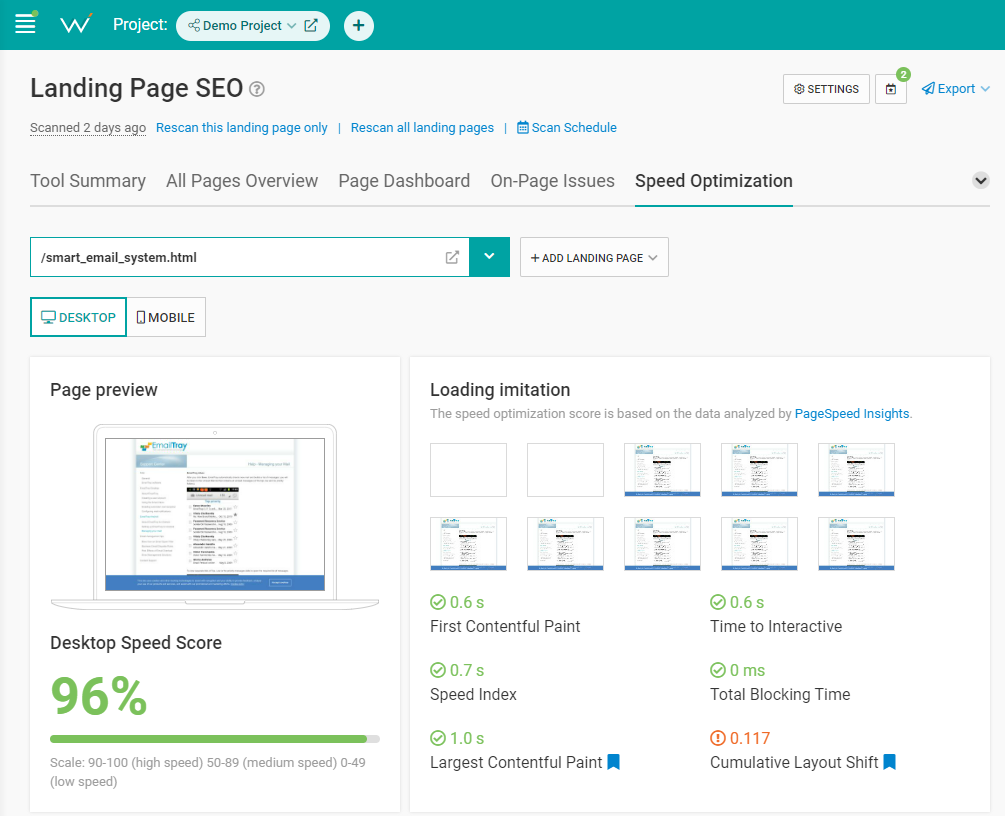
Make your site mobile-friendly
Even though reading on a handheld device while scrolling with your finger feels more like reading a book than a newspaper, news still goes quite well with mobile. And it has to, because Google’s mobile-first index is as unforgiving as its desktop predecessor. If your news site can’t provide a good mobile user experience, don’t expect high rankings.
Fortunately, optimizing your site for mobile isn’t too hard. You will just need to make it display well on small screens.
- Implement a responsive design;
- Use large fonts – 16 pt. or larger;
- Say no to obstructing popups (exceptions: sensitive content warning, age verification, asking permission to use cookies);
- Leave space between lines and paragraphs of text, images, buttons and other page elements;
- Load quickly.
Scan your site with WebCEO’s Mobile Optimization tool (which can be found right next to the Speed Optimization tool) and see if you could make your news portal more mobile-friendly.
Fix technical errors
Depending on how many articles you plan to release daily, your news portal could be a very prolific source of user traffic; traffic that you risk losing, if you get technical errors and just leave them unchecked.
At least once a week, audit your site for errors with WebCEO’s Technical Audit tool. Once you’ve found the errors, fix them.
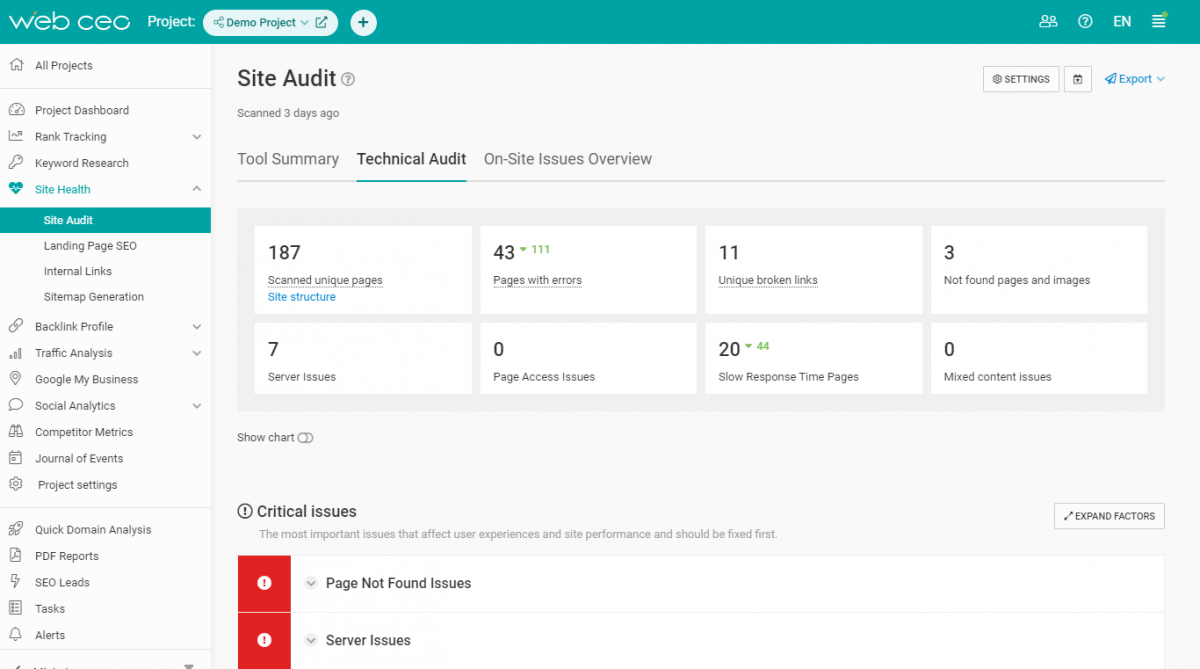
4. Build relevant links
Your news portal is going to need backlinks, same as every other site. Where can you get them?
- Blogs. Another easy way to make a backlink is to cite your news article somewhere as a source. It can be your own blog, or you can write a guest post for somebody, or just post a non-spammy link somewhere in comments. Same as above, mind both quality and quantity.
- Content directories. You can submit your news articles to specialized directories. They tend to have a high domain authority, so backlinks from them can give you a tremendous ranking boost. Some of those directories can be found in WebCEO’s Content Submission tool.
- Forums. It’s hard to find a forum that doesn’t have a section for news threads. Easy all-you-can-have backlinks! Just be mindful of their quality and try not to make too many of them at once. Keep an eye on your link profile in WebCEO’s My Backlinks tool.
Note that Google expects you to have at least 20% nofollow links to look like a natural website, so it’s definitely not a waste of time to show Google you’re getting nofollow links from authoritative sites.
5. Use social media
Can you imagine running a news site and not posting news on your own social media channels? That just screams incompetence, doesn’t it?
Social platforms are very news-friendly. Coupled with news portals, they almost always form a healthy, mutually beneficial relationship – especially with their owner’s help. So what can you do to help it grow?
The most basic rule is to post often and consistently. Here are the other rules, each of which deserves a detailed explanation.
Be present everywhere
How many social platforms can you name from the top of your head? That’s how many you should use for sharing your news articles – and then some more. The most popular platforms like Facebook, Twitter and YouTube would be anyone’s first choice, but of course, there are plenty of others.
Bottom line: cast a wide net and build your presence everywhere you can. You should be getting at least 25% of your traffic from social media anyway.
Once you’ve made the social media pages and have been using them for some time, you’ll want to know how well they are performing and if your social media strategy needs improvement. You can judge this by the user engagement: the more upvotes, comments and shares you get for your posts, the better. Count them all quickly with WebCEO’s Social Engagement tool.
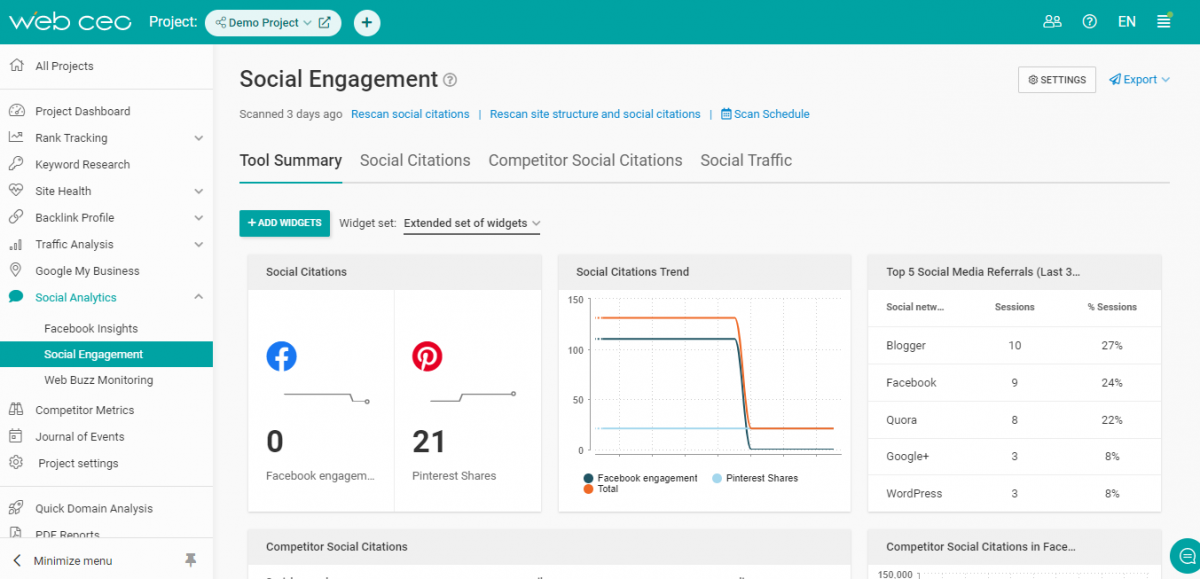
It helps to compare your pages’ performance to that of your competitors’ pages in social media, too. If they are getting more engagement, you might want to take a look at what works for them and start doing that, too.
Measure your competitors’ social engagement with WebCEO’s Competitor Social Citations.
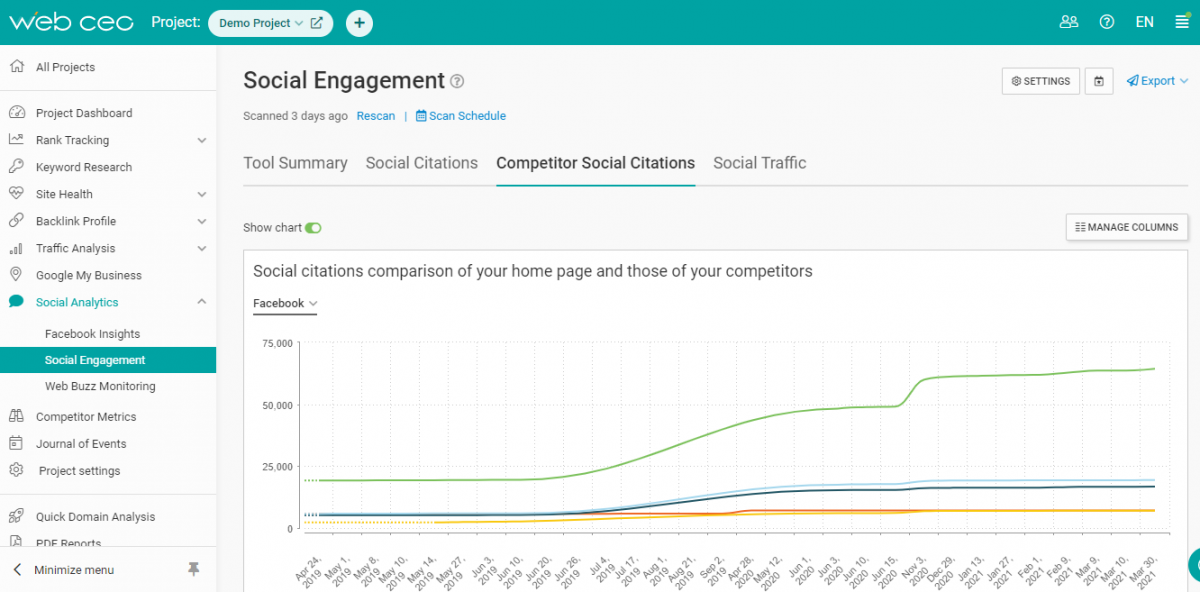
Find the best times to post
Your readers aren’t online 24/7. If you post to social media whenever, your updates will most likely get buried in the readers’ feed under countless other posts.
Fortunately, the best times to post have been thoroughly studied. For news portals, these are the best hours (in your local time) and days to post on some of the most popular social platforms.
Facebook:
- Best times: 8 AM – 1 PM
- Best days: Mondays through Fridays
YouTube:
- Best times: 2-4 PM on weekdays, 9-11 AM on weekends
- Best days: Friday, Saturday, Sunday
Instagram:
- Best times: 8 AM – 1 PM
- Best day: Wednesday
Twitter:
- Best times: 9 AM – 12 PM
- Best days: Wednesday, Friday
LinkedIn:
- Best times: 10 AM – 3 PM
- Best days: Tuesday, Wednesday, Thursday
TikTok:
- Best times: Tuesdays 2–3 PM, Wednesdays and Thursdays 1–3 PM
- Best days: Wednesday, Thursday
Of course, there’s always a chance it might be different for your own site. Better play it safe and look through your Google Analytics data for the times you are getting the most visitors – and then post at those times.
Link to your social pages from your site
Make it easy for readers to find you in social media. The easiest way is, of course, through your news portal. Most sites do it by putting links to their social pages in the footer or upper corner. Despite often being placed at the very bottom of websites, those links work: people are used to them being there, so they will scroll down without hesitation. If they find no social media icons, they may decide you aren’t seriously in business.
Remember to put icons of social platform logos next to the links – or just use the icons themselves as the links.
Implement buttons to share your articles in social media
Copying the post’s URL, opening a new tab for Facebook, pasting the URL… Call me lazy, but don’t you think there are a tad too many steps? If sharing a news article can be done with a single press of a button, that’s certainly the more preferable choice.
If you want readers to share your articles (and you do), make it easy and quick.
Sites made in WordPress have it nice: just install a plugin, and the job is done. Easiest part of WordPress SEO hands down. Something like WP Social Sharing will make it look like this:
It might be more difficult for non-WordPress sites, but those buttons are worth the effort to put up.
6. Get featured in Google News
Ranking high in Google is already a huge victory. News articles may be granted an even greater honor: being featured in Google News. What makes it such a big deal? Simply the fact that Google News articles often appear in featured snippets, as well as get over 380,000,000 visits per month.
In order to get a slice of that monster pie, you will have to fulfil a long list of requirements.
1. Be a news site. Quite obviously, news is the sole type of content accepted by Google News.
2. Submit your site to Google News. This is the next step that must be done before all other steps in this list! Once you’ve submitted your site, verified your ownership and requested inclusion, you can begin to optimize it for Google News.
3. Descriptive URLs. The majority of articles featured in Google News have URLs you can read. They tell users what your content is about straight away.
4. No errors in the text. Always proofread your articles to ensure their grammar, punctuation and syntax are perfect.
5. Post about events in your country. If an American news portal reports about something in California, Google News will show it. The same article from a British site won’t be so lucky. Incidentally, this step happens to be local SEO-friendly.
6. Use images and video. At the very least, your article should have a hero image. Additional photos and videos increase your chances.
7. Be mobile-friendly. It shouldn’t be a surprise that Google News favors content that can rank high in Google’s mobile-first index.
8. Fast loading speed. A low page load time is always a plus, besides the fact that it’s a ranking factor. It’s also crucial for articles you want to submit to Google News. You’ll have even better chances if you make your site load quickly by using the next point in our list…
9. Accelerated Mobile Pages. AMP is a Google-run project, so they naturally approve of sites that are using it. Indeed, many news articles in Google News are made in AMP.
10. Follow Google’s Webmaster Guidelines. When in Rome, do as the Romans do. Respect Google’s rules, and you will receive respect in return.
11. Follow Google’s Content Policies. Google News prohibits certain kinds of content: graphic, hateful, illegal and others. See the full list here.
12. Post news on your site under a subcategory. The subcategory can be anything the news article is related to, such as /politics/ or /sports/, or even plain old /story/ or /article/. In other words, your articles should have URLs like https://newsportal.com/news/article.
13. Create a unique sitemap for Google News content. Google has detailed instructions for creating and validating news sitemaps, which you can view on their site.
14. Use appropriate article structured data. Schema.org has markup for every kind of content, and news is no exception. With snippets code in each article, you can wind up at the coveted Position Zero with the first paragraph of your article and your hero image displayed on the Google results page itself, above the first organic result for a keyword and often above even the Google ads.
Google starts reviewing your news site for inclusion as soon as you submit it. The majority of the steps in the list above are for making your site a more viable candidate. But even if you aren’t accepted, this instruction is meant to raise your site’s visibility with Google and its content’s overall quality, which is always a good thing for your rankings.
